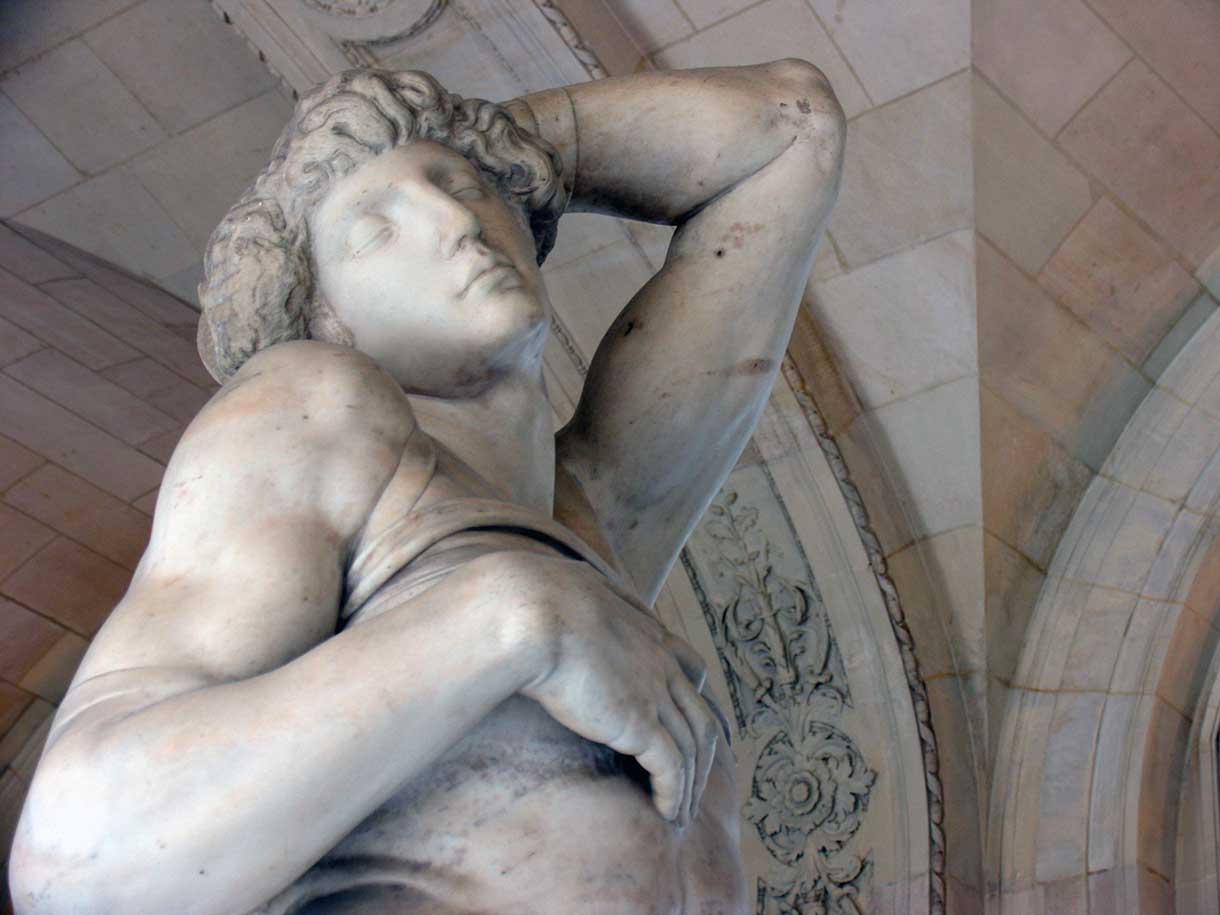
The Louvre is not a place one would instinctively visit to see work by the famous Renaissance sculptor Michelangelo Buonarotti. He does have work in major museums around the world, but a large portion of his portfolio is still in Italy, in and around Tuscany and Rome.
Included in the vast sculpture collection of The Louvre are two of his Slaves – The Rebellious Slave and The Dying Slave (shown above). Sculpted between 1513 and 1515, these sculptures were originally meant for the tomb of Pope Julius II. Note that Pope Julius II was the pope that dictated Michelangelo to work on the ceiling of the Sistine Chapel. One of Michelangelo’s lifelong projects was the tomb of Pope Julius, which went through many design changes while the Pope was alive. When Pope Julius died in 1515, the plans for the tomb were changed and simplified yet again and the already carved Slaves then became Michelangelo’s to keep or do with as he pleased.
When Michelangelo fell ill in 1544 and again in 1545, he stayed at the Strozzi palace in Rome. His good friend Luigi del Riccio was an agent for Roberto Strozzi, and it was with del Riccio that Michelangelo lived while he took care of him. Michelangelo gave The Dying Slave and The Rebellious Slave to del Riccio in a return of the favor for his care. In 1550, a few years after del Riccio’s death, these two Slaves were sent to France by Strozzi and presented to Henri II. They first occupied two niches at the Château d’Ecouen before Cardinal de Richelieu took them to his château in Poitou. The other four Slaves in the series are in the Galleria dell’Accademia in Florence.
Michelangelo was an enigmatic figure not only in the art world of his time, but he is today as well. He was known for his cranky attitude, but who wouldn’t be when one’s living is dependent not only on the whims and desires of the Pope but also on the heaviness of the Pope’s purse? While Michelangelo thought of himself as a sculptor, and thought of sculpting the human form as one of the highest of the arts, prior to creating The Slaves he had spent four years of his life in the lesser art of painting the ceiling of the Sistine Chapel. Even though his attitude was at times crusty, he had a deep feeling of sensuality about him, which is evident not only in The Dying Slave, but in the entire Slave series.
Were the Slaves unfinished for technical reasons? The grain of the marble on the Rebellious Slave’s face and the thinness of the base beneath the figures’ lower feet no doubt explain that the works were abandoned. However, non-finito was a recurrent theme with Michelangelo, who played on the opposition between the shine on the smooth, impeccable body of the Dying Slave, and the rough surface of raw marble. In his quest for absolute truth in art, he abandoned a work when he felt he could not attain his ideal. He thus left the marks of his tools (hammers, chisels, rasps, gradines and trepans) clearly visible — living traces of his tireless fight with raw material, which he worked relentlessly in his quest to liberate the figure imprisoned within. — The Louvre
The Dying Slave and The Rebellious Slave were seized during the French Revolution and entered into The Louvre in 1794.
